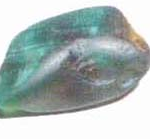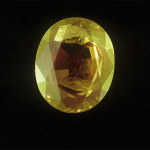Background on Alexandrite
Alexandrite is one of the rarest of all colored gemstones available today. More specifically, it is an  extremely rare color change variety of chrysoberyl (a cyclosilicate). Despite its name, chrysoberyl, which is an aluminate of beryllium, does not actually belong to the beryl mineral group, but rather, it is classified as its own independent mineral group.
extremely rare color change variety of chrysoberyl (a cyclosilicate). Despite its name, chrysoberyl, which is an aluminate of beryllium, does not actually belong to the beryl mineral group, but rather, it is classified as its own independent mineral group.
The history of alexandrite is quite controversial, dating back to the times of Imperial Russia. It is said that the stone was named after the Russian tsar, Alexander II (1818 – 1881), but was discovered by a French mineralist called Nils Gustaf Nordenskiöld (1792 – 1866). When Nordenskiöld first discovered alexandrite in 1834, it was initially thought to be an emerald because it was discovered in emerald mines located in Russia’s Ural region, near the Tokovaya River. The specimen was later identified as a chromium bearing, color  change variety of chrysoberyl. Legends claim that the discovery of alexandrite was made on the very day the future tsar of Russia became of age. Inevitably, the red and green color change stone was to be declared the official gemstone of Imperial Russia’s Tsardom.
change variety of chrysoberyl. Legends claim that the discovery of alexandrite was made on the very day the future tsar of Russia became of age. Inevitably, the red and green color change stone was to be declared the official gemstone of Imperial Russia’s Tsardom.
The color change phenomenon seen in alexandrite is referred to as the ‘alexandrite effect’. The change in color can be observed under certain lighting conditions, typically under daylight and incandescent lighting. Alexandrite is also a strongly pleochroic gem. It can display emerald green, red, orange and yellow colors depending on which angle the stone is viewed from. The pleochroic properties of alexandrite are completely independent from its unique color change ability. Typically, alexandrite exhibits an emerald-green color in daylight, and raspberry-red under incandescent lighting. Alexandrite can also occur with yellowish  and pink colors, and extremely rare specimens can exhibit chatoyancy (cat’s eye) effects when cut en cabochon. The color change ‘alexandrite effect’ is a result of the strong absorption of light in the yellow and blue portions of the color spectrum.
and pink colors, and extremely rare specimens can exhibit chatoyancy (cat’s eye) effects when cut en cabochon. The color change ‘alexandrite effect’ is a result of the strong absorption of light in the yellow and blue portions of the color spectrum.